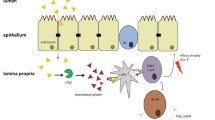Abstract
While coeliac disease is primarily a disease of the digestive system, there have been several reports of neurological effects, both motor and cognitive. Here, we present the case of a woman with coeliac disease, under dietary control, in whom there is profound long-standing visual disturbance including reduction of visual fields, loss of rapid flicker and colour sensitivity and severe deficits in acuity. Structural magnetic resonance imaging (MRI) indicates large regions of calcification and abnormal tissue that is restricted to the occipital cortex, particularly the posterior region. Functional MRI indicates an absence of normal visual activation in the primary visual cortex, but at least in one hemisphere, there is neural activity to moving stimuli in visual motion area hMT+. White matter microstructure in the pathway between the lateral geniculate nucleus and hMT+ is normal compared to healthy control subjects, but is severely abnormal between the lateral geniculate nucleus and primary visual cortex. This case study illustrates the very specific nature of cortical deficit that can arise in association with coeliac disease, and highlights the importance of early dietary control for the disease.



Similar content being viewed by others
References
Barbur JL (2004) ‘Double-blindsight’ revealed through the processing of color and luminance contrast defined motion signals. Prog Brain Res 144:243–259
Bridge H, Thomas OM, Minini L, Cavina-Pratesi C, Milner AD, Parker AJ (2013) Structural and functional changes across the visual cortex of a patient with visual form agnosia. J Neurosci Off J Soc Neurosci 33:12779–12791
Crawford JR, Garthwaite PH, Porter S (2010) Point and interval estimates of effect sizes for the case-controls design in neuropsychology: rationale, methods, implementations, and proposed reporting standards. Cogn Neuropsychol 27:245–260
Currie S, Hadjivassiliou M, Clark MJ, Sanders DS, Wilkinson ID, Griffiths PD, Hoggard N (2012) Should we be ‘nervous’ about coeliac disease? Brain abnormalities in patients with coeliac disease referred for neurological opinion. J Neurol Neurosurg Psychiatry 83:1216–1221
Cury RG, Hobi Moreira C (2014) Images in clinical medicine. Occipital calcification and celiac disease. New England J Med 370:e26
Dumoulin SO, Bittar RG, Kabani NJ, Baker CL Jr, Le Goualher G, Bruce Pike G, Evans AC (2000) A new anatomical landmark for reliable identification of human area V5/MT: a quantitative analysis of sulcal patterning. Cereb Cortex 10:454–463
Hadjivassiliou M, Grunewald RA, Davies-Jones GA (2002) Gluten sensitivity as a neurological illness. J Neurol Neurosurg Psychiatry 72:560–563
Hadjivassiliou M, Sanders DS, Grunewald RA, Woodroofe N, Boscolo S, Aeschlimann D (2010) Gluten sensitivity: from gut to brain. Lancet Neurol 9:318–330
James-Galton M, Plant GT, Warrington E (2001) The cortical vision screening test (CORVIST). Thames Valley Test Company, London
Magaudda A, Dalla Bernardina B, De Marco P, Sfaello Z, Longo M, Colamaria V, Daniele O, Tortorella G, Tata MA, Di Perri R et al (1993) Bilateral occipital calcification, epilepsy and coeliac disease: clinical and neuroimaging features of a new syndrome. J Neurol Neurosurg Psychiatry 56:885–889
Malikovic A, Amunts K, Schleicher A, Mohlberg H, Eickhoff SB, Wilms M, Palomero-Gallagher N, Armstrong E, Zilles K (2007) Cytoarchitectonic analysis of the human extrastriate cortex in the region of V5/MT+: a probabilistic, stereotaxic map of area hOc5. Cereb Cortex 17:562–574
Niederhauser S, Mojon DS (2002) Normal isopter position in the peripheral visual field in goldmann kinetic perimetry. Ophthalmol J Int d’ophtalmologie Int J Ophthalmol Zeitschrift fur Augenheilkunde 216:406–408
Pfaender M, D’Souza WJ, Trost N, Litewka L, Paine M, Cook M (2004) Visual disturbances representing occipital lobe epilepsy in patients with cerebral calcifications and coeliac disease: a case series. J Neurol Neurosurg Psychiatry 75:1623–1625
Taylor I, Scheffer IE, Berkovic SF (2003) Occipital epilepsies: identification of specific and newly recognized syndromes. Brain J Neurol 126:753–769
Tournier JD, Calamante F, Connelly A (2012) MRtrix: diffusion tractography in crossing fiber regions. Int J Imaging Syst Technol 22:53–66
Warrington EK, James M (1991) The Visual Object and Space Perception Battery. Thames Valley Test Co, Bury St Edmunds
Warrington EK, Taylor AM (1973) The contribution of the right parietal lobe to object recognition. Cortex J Devoted Study Nerv System Behav 9:152–164
Watson JD, Myers R, Frackowiak RS, Hajnal JV, Woods RP, Mazziotta JC, Shipp S, Zeki S (1993) Area V5 of the human brain: evidence from a combined study using positron emission tomography and magnetic resonance imaging. Cereb Cortex 3:79–94
Acknowledgments
This work was funded by the Royal Society through a University Research Fellowship to HB. RM held a Medical Research Council Studentship and a Foulkes Fellowship.
Conflicts of interest
On behalf of all authors the corresponding author states that there is no conflict of interest.
Ethical standard
All subjects gave written informed consent prior to participation, and the study was granted ethical approval from Oxfordshire REC (08/H0605/156).
Author information
Authors and Affiliations
Corresponding author
Rights and permissions
About this article
Cite this article
Millington, R.S., James-Galton, M., Barbur, J.L. et al. Severe, persistent visual impairment associated with occipital calcification and coeliac disease. J Neurol 262, 2056–2063 (2015). https://doi.org/10.1007/s00415-015-7817-1
Received:
Revised:
Accepted:
Published:
Issue Date:
DOI: https://doi.org/10.1007/s00415-015-7817-1




